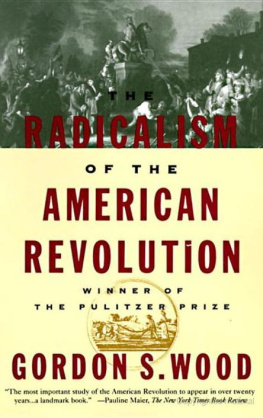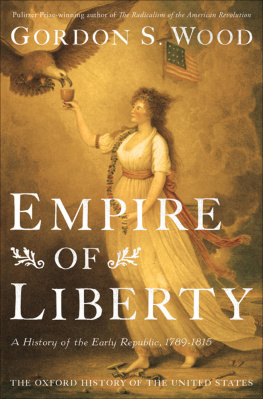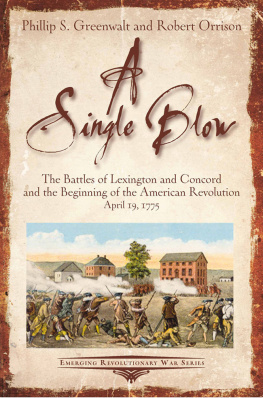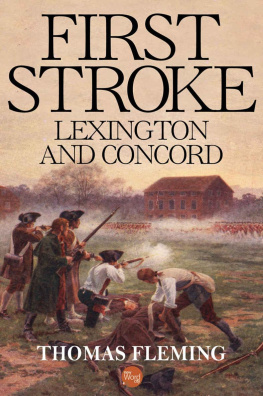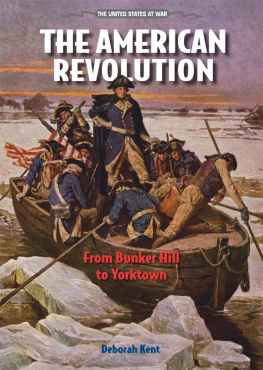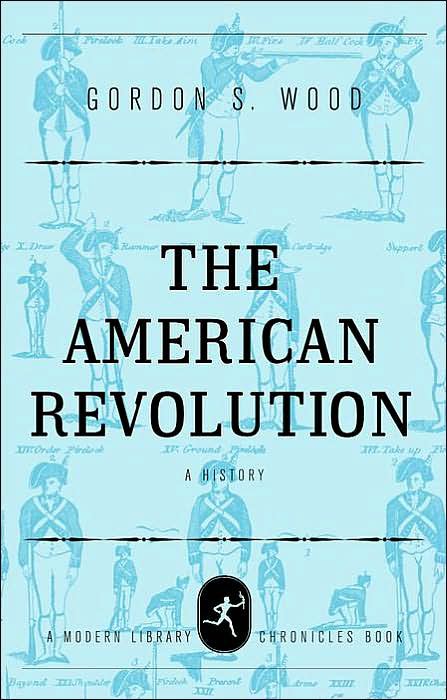
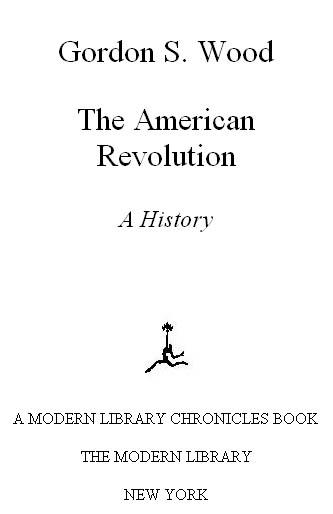
Contents
Acknowledgments
My thanks to Scott Moyers of Random House and to my wife Louise and my daughter Amy for their expert editorial assistance. My thanks also to Houghton Mifflin for permission to use portions of my section of The Great Republic by Bernard Bailyn et al.
Pattern of Settlement in the Colonies, 1760
Northern Campaigns, 17751776
Northern Campaigns, 1777
Yorktown and the Southern Campaigns, 17781781
Chronology
1763
| February 10 | The French and Indian War ends with the Peace of Paris |
| October 7 | The Proclamation of 1763 bans all westward migration in the colonies |
| MayNovember | Chief Pontiac leads an Indian rebellion in the Ohio Valley |
1764
| April 5 and 9 | Parliament passes the Sugar and Currency Acts |
1765
| March 22 | Parliament passes the Stamp Act |
| May 15 | Parliament passes the Quartering Act of 1765 |
| October 7 | The Stamp Act Congress convenes |
1766
| March 18 | Parliament repeals the Stamp Act and passes the Declaratory Act |
1767
| June 29 | Parliament passes the Townshend Acts |
| November 5 | John Dickinsons Letters from a Farmer in Pennsylvania begins publication |
1768
| February 11 | Samuel Adams composes the Massachusetts circular letter |
| June 8 | British troops are sent to Boston |
1770
| March 5 | Boston Massacre |
| April 12 | The Townshend duties are repealed, except for the duty on tea |
1772
| June 9 | The British ship Gaspe burned off Rhode Island |
| November 2 | Bostonians publish The Votes and Proceedings, enumerating British violations of American rights |
1773
| January 6 | Massachusetts governor Hutchinson argues the supremacy of Parliament before the General Court |
| May 10 | Parliament passes the Tea Act |
| December 16 | Boston Tea Party |
1774
| March 31June 22 | Parliament passes the Coercive Acts and the Quebec Act |
| September 5 |
| October 26 | First Continental Congress meets in Philadelphia |
1775
| April 18 | Paul Reveres ride |
| April 19 | Battles of Lexington and Concord |
| May 10 | American forces capture Fort Ticonderoga on Lake Champlain |
| May 10 | Second Continental Congress convenes |
| June 15 | George Washington is appointed commander of the Continental Army |
| June 17 | Battle of Bunker Hill |
| August 23 | King George III declares the colonies in open rebellion |
| December 31 | Colonists are defeated at Quebec |
1776
| January 10 | Thomas Paine publishes Common Sense |
| March 17 | British troops evacuate Boston |
| July 4 | Continental Congress approves the Declaration of Independence |
| August 27 | Battle of Long Island, New York; British take New York City |
| December 2526 | Washington crosses the Delaware River; battle of Trenton |
1777
| January 3 | Battle of Princeton |
| September 11 | Battle of Brandywine |
| October 4 | Washington is defeated at Germantown; his army retires to Valley Forge for winter |
| October 17 | British general Burgoyne surrenders at Saratoga |
| November 15 | Articles of Confederation are approved by Congress and sent to states for ratification |
1778
| February 6 | France and the United States form an alliance |
1780
| May 12 | British capture Charleston, South Carolina |
| September 25 | Benedict Arnold flees to the British after spying for them for more than a year |
| October 7 | British general Cornwalliss troops are forced to retreat from North Carolina |
1781
| January 17 | Battle of Cowpens, South Carolina |
| March 1 | Articles of Confederation are ratified |
| March 15 | Battle of Guilford Courthouse, North Carolina |
| October 19 | Cornwallis surrenders to Washington at Yorktown, Pennsylvania |
1783
| September 3 | Treaty of Peace between the Americans and British is signed |
1786
| August | Shayss Rebellion in western Massachusetts |
| September 11 | Annapolis Convention |
1787
| May 25 | Constitutional Convention opens in Philadelphia |
| July 13 | Northwest Ordinance is enacted by Congress |
| September 17 | Constitutional Convention approves the newly drafted Constitution and sends it to Congress |
| October 27 | First of Hamilton, Madison, and Jays Federalist Papers appears |

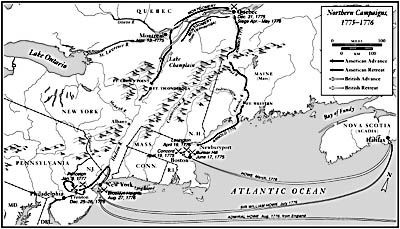
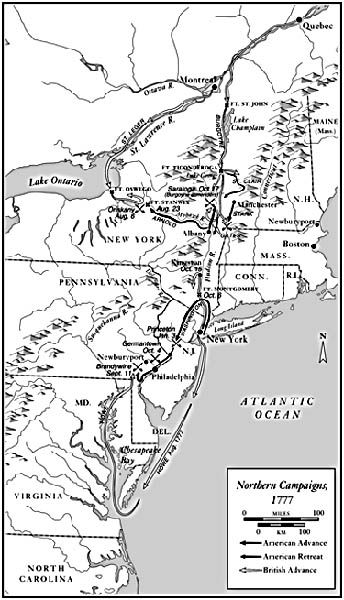
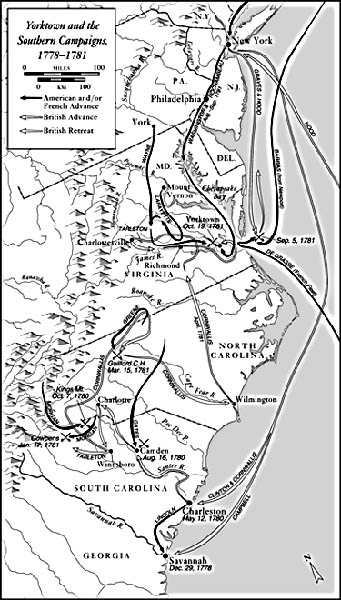
Preface
When in the midst of the Civil War Abraham Lincoln sought to define the significance of the United States, he naturally looked back to the American Revolution. He knew that the Revolution not only had legally created the United States, but also had produced all of the great hopes and values of the American people. The noblest ideals and aspirations of Americanstheir commitments to freedom, constitutionalism, the well-being of ordinary people, and equality, especially equalitycame out of the Revolutionary era. But Lincoln saw as well that the Revolution had convinced Americans that they were a special people with a special destiny to lead the world toward liberty. The Revolution, in short, gave birth to whatever sense of nationhood and national purpose Americans have had.
Such a momentous event has inevitably attracted successive generations of historical interpretation. At the outset Americans saw their Revolution as a heroic moral struggle for liberty against the evils of British tyranny, with the participants being larger-than-life heroes or villains. Then through much of the nineteenth century, largely through the work of George Bancroft, the Revolution lost some of its highly personal character and became the providential fulfillment of the American peoples democratic destiny, something preordained from the very beginning of the seventeenth-century colonial settlements. And like the nation it produced, it was exceptional. Unlike the French Revolution, which had been caused by actual tyranny, the American Revolution was seen as a peculiarly intellectual and conservative affair, as something brought about not by actual oppression but by the anticipation of oppression, by reasoning and devotion to principle, such as "no taxation without representation."
Next page

